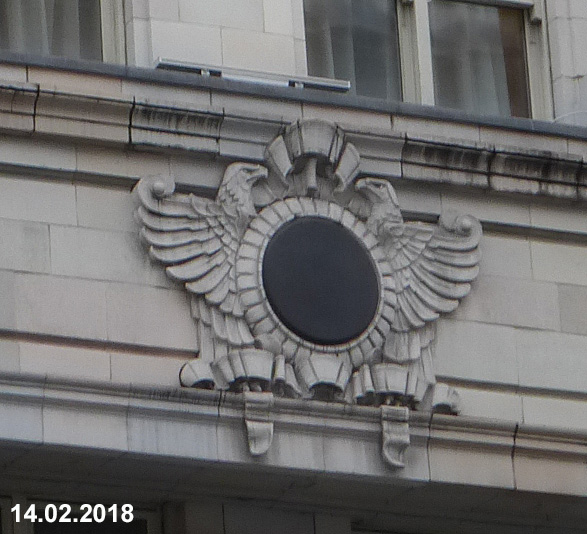
In 1928 the hotel was
given an extensive redevelopment in the Art
Deco style and when it reopened in it
boasted 980 bedrooms. it featured a
Winter Garden Restaurant that could seat 500
guests attended by a staff of over
100. The Art Deco conversion is
credited to Oliver P. Bernard and the
Victoria & Albert Museum website says
that his, "... designs for the Strand
Palace made this one of the most
celebrated hotel interiors in London.
Bernard had worked as a set-designer in
theatre and opera, in Britain and the
USA. This experience clearly influenced
his work at the Strand Palace. The foyer
combined traditional and new materials
and made innovative use of glass and
lighting. The walls were clad with pale
pink marble and the floor with
limestone. The balustrades, columns and
door surrounds were made of translucent
moulded glass, chromed steel and mirror
glass. .... The foyer was
removed from the Strand Palace
Hotel in 1969 and, for the first time,
was partially reconstructed for the
recent Art Deco exhibition."

During WWII the hotel was
popular with American forces and was
apparently designated as an official US
"rest and recuperation" residence.
After the war the hotel further improvements
increased the number of bathroom facilities
which resulted in a reduction in the number
of bedrooms to 786. The hotel's
website in 2018 says that, "...
the Strand Palace Hotel would now be
unrecognisable to guests from the
Edwardian era. But links with the past
still remain: a few Art Deco touches are
visible inside and outside the building;
guests from the war years still return
to relive their memories. Outside, The
Strand remains a buzzing focal point of
West End life, just as it was in 1909."





